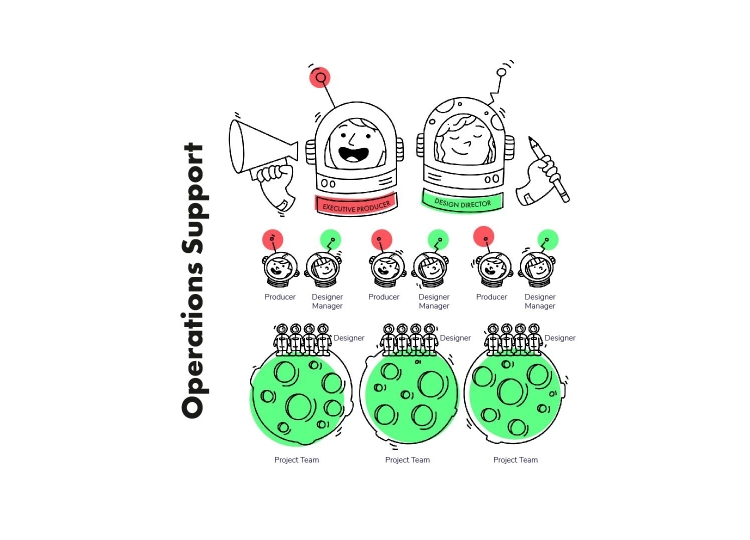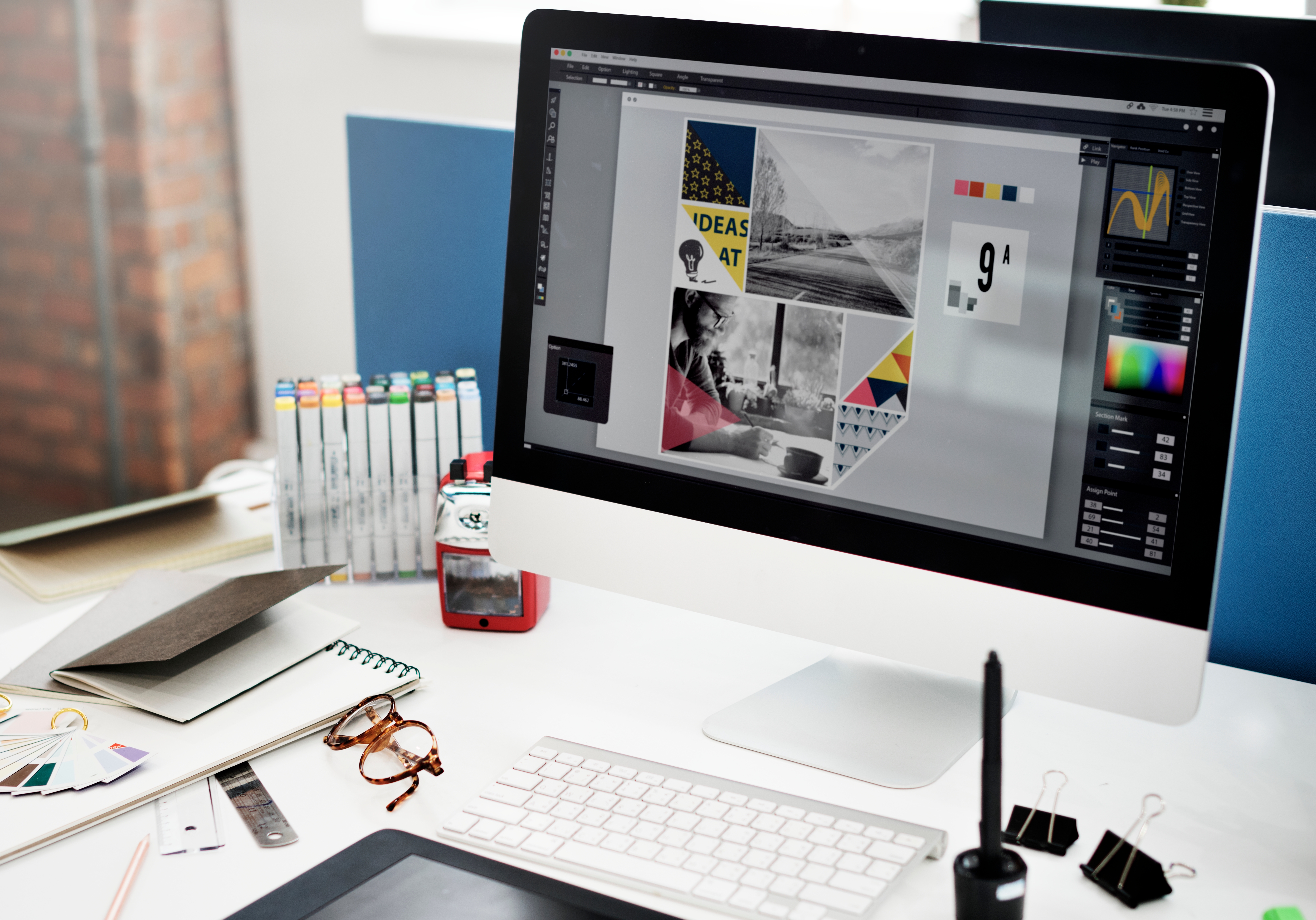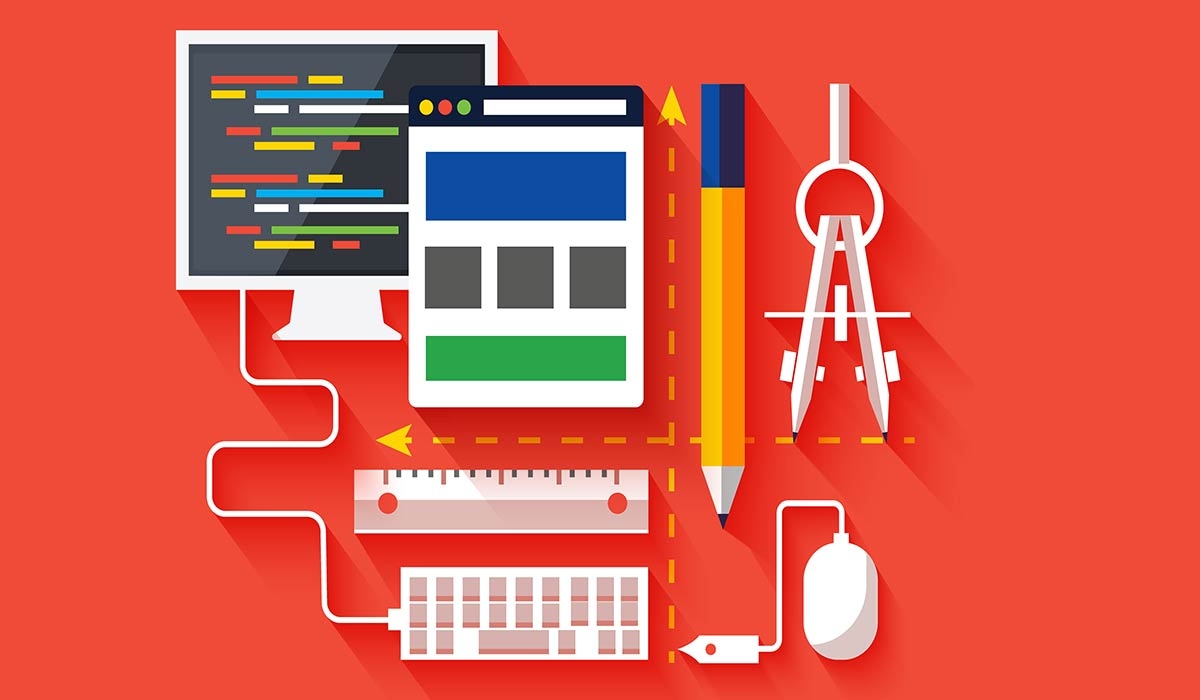
Demand for design is surging. It’s become essential to creating a lasting impact on your potential customer. These days, you need consistent brand touchpoints—from websites to social media to product packaging—for your product or service to be “sticky,” recognizable.
So, how can your company produce unique, on-brand designs with the refresh and speed that the market demands?
Intelligent businesses are leaning into design operations teams—aka DesignOps—to scale their design systems and find success.
NOTE: This is an abbreviated version of our full DesignOps Guide that includes expert interviews and rich analysis. Enjoy this read, and choose to download the full guide.
In this guide:
- What is DesignOps?
- How does DesignOps work? (People, business, and workflow)
- Why DesignOps matters (predictable processes and smooth workflows)
- The role of DesignOps (Setting your objective with 5 inputs and 2 outcomes)
- How to structure a DesignOps team to win
- The DesignOps tools you need to get started
- How DesignOps scales with you
- How to get started with the DesignOps mindset
What is Design Operations (DesignOps)?
Design Operations is either an individual, or a whole department responsible for planning, defining, and managing the entire design process within a company.
They may not be designers by trade.
Their goal is to streamline design, remove any inefficiencies, and enable the designers to flow with the research they need, repeatable processes, and tools to succeed.
They also help grow and evolve design teams by operationalizing workflows. Design operations leads are managing projects, budgets and hiring, not necessarily designing.
Most importantly, they help improve the quality of the designs being produced by allowing designers to do what they do best: design.
How does DesignOps work?
There are three different operational areas of focus: people, business, and workflow. Each is weighted differently depending on the size or purpose of DesignOps within the company.
- People operations focus is ensuring each designer has a clear career path, addressing skills gaps, and helping to build a world-class design team.
- Business operations mindset is securing the proper budget for the design team and supplying them the equipment (e.g. creative software) to succeed.
- Workflow operational management sets up the proper design management software and focuses on research, scalable processes, and creative production flow.
Interested in DesignOps? You may also like:
Why DesignOps matters
The pain of design projects strewn left and right is tangible, and worse, distracting. Your designers are busy, trying to get through their ever-growing pile of work, but they're also sitting in meetings, drowning in emails and lost in mundane tasks. Sure, some things are getting done, but not always the right way or at the ideal pace.
DesignOps is helping to solve the common crux of this issue—creative bottlenecks and inefficiencies.
The more companies need design, the more they need DesignOps. It's something you don't know you're missing until you've tried it. And once experienced, you can’t imagine the world without it.
It’s why Airbnb, Twitter, and Lyft (to name a few) and their in-house teams embrace the process to deliver unique designs at the scale the market demands.
But not every company or overstretched creative department is ready for the financial and organizational commitments DesignOps teams require.
But don’t fret.
Just like the process itself simplifies design, you can design a process that simplifies its setup.
The Role of DesignOps
It starts by identifying DesignOps roles which will result in streamlining the design process. Think product management but for a design program.
To develop this design ops mindset, think in 3 ways: objectives, inputs, and outcomes.
- The objectives are to support the design team members, so they focus on the business goals and the customer.
How do you provide the support? When designers have the right tools and processes to create their best work, they can focus on delivering outstanding designs that delight their customers and aren't bogged down with unnecessary tasks. Flow states don’t come when they’re bouncing between meetings, suffering analysis paralysis, or forgetting the next steps in the process. You must limit those distractions and emphasize the value of their deep work.
Design work is critical to the customer experience and thus its intrinsic nature cannot be discounted.
- Next, you can fulfill the objectives through 5 inputs enabling the team to design consistently and at scale.
1. Purpose
Once a design team truly understands why they exist and how to define company success, they feel ingrained in its goals and can create more meaningful value.
2. Talent
You create a culture where designers want to stay and grow their careers from purpose. A good employee experience will help HR find and attract top talent, expanding your design capabilities.
3. Process
Turning talent into functional teams takes a process. The process opens communication, learning opportunities with fellow designers and other departments and allows everyone to share in team success. It determines the right time to bring a designer into the project eliminating the siloed feeling designers get when they become a service, no part of the workflow.
4. Tools
To enable workflow, you need communication and collaboration tools. Designers need to understand reviews and learn from the feedback. In return, they can help communicate to everyone how to speak the design language. By removing this friction and confusion, everyone can act appropriately for the greater good.
5. Structure
With the tools creating open communication and where design fits into the organization’s structure, everyone knows how decisions are made and who has authority and can act accordingly.
- With those five inputs, you can look out your two-part outcomes: culture and results to see if they match your objectives.
Culture eats strategy for lunch.
With a purposeful culture, designers feel empowered, confident to act autonomously and look forward to new opportunities to help the business.
Results are how all teams across the organization can measure success. Making designers part of any workflow makes it easier to attribute their success to key performance indicators (KPIs) typically associated with marketing or product teams. If their designs help deliver better revenue and customer satisfaction efficiently—with a positive impact on the business—your DesignOps team is working.
How to Structure a DesignOps Team to Win
If your design team, or at least your design ops leader, isn’t sitting in on strategy meetings, unaware of the process for design requests, and you’re only measuring them on how fast they churn out creative assets, that’s a problem. The solution is in the DesignOps definition of a team.
What does a DesignOps team do?
DesignOps teams help to manage resourcing, employee and vendor onboarding. They oversee budgets and drive day-to-day project workflows—they’re doing everything they can to enable creative teams to focus on doing their best work.
DesignOps team roles
A small company might only have a single designOps manager whose responsibilities span all the below roles. From startup to enterprise, here are some of the functions or duties. Note: there may be some overlap, but we dive further into detail in our downloadable guide.
- Building operations for design requires a forward-thinking mind to manage roadmaps, headcount planning, and user research (from sourcing participants to maintaining the database and managing the tools) to prepare for what’s to come.
- Continuous onboarding includes creating innovative hiring programs to discover top talent and training them on your organization’s tools and processes for succession planning. Run regular training sessions for existing and new hires to continuously deploy new procedures or tool changes.
- Strong Culture and Team Building may be seen as an extension of onboarding because it features workshops and professional development opportunities, on or offsite. It differs because it creates a mini-community where open communication thrives, and as a result, so does support, both professionally and mentally, for everyone on the team.
- Project management is first and foremost in the mind of the design Ops manager. They look at project scope, timelines, run daily stand-ups and design sprints and help designers design by running interference on last-minute requests that could derail ongoing projects. A project management course can provide valuable frameworks for managing these processes efficiently.
- Communications strategy furthers designOps for project management to get any internal messaging cascading out to the external teams. It’s a chance to showcase the grand designs the design team is busy creating. This DesignOps role set meetings with marketing and product teams, and take the action items back to design in a way that’s understood and not out of scope. Ideally, (if you don’t have it already) set up an idea and asset library for anyone to access to drop in innovative concepts, so everyone feels like an integral part of the designs.
- Process design is about managing the design systems in place, including new collaboration frameworks with cross-functional departments, and ensuring all the tools used are up-to-date and running smoothly.

Now that you know the roles within the team, there are two DesignOps team models you can implement to get started.
Operations Support is on the outside looking in
The DesignOps function in this model is responsible for setting standards and refining processes for the entire design team.
In this operational management model, the executive producer and the design managers take a 30,000-foot view of project planning, helping to smooth production by taking care of communications, team development, recruiting, design tools and systems, and budgets.

Project Support works in parallel with design leaders
The DesignOps function in this model is baked into specific project workflows to elevate and drive the design process in tandem with design leaders.
Here, the executive producer and the design managers attend to the high-level planning and program management and get involved in the nitty-gritty, driving the day-to-day creative workflows.

The DesignOps tools you need to execute great design at scale
The DesignOps framework is the orchestration of people, processes, and craft.
Tools are simply the devices you use to enable your process.
Let’s look at some of the tools used by companies with DesignOps, including Mailchimp, Dropbox, LinkedIn, to more traditional companies, including Wells Fargo, Cisco and Visa.
- Communication tools include tools like Slack, Teams or Google Chat.
- Project management tools like Asana, Trello, or Monday.
- Planning tools are to understand customer needs, define opportunities and solve problems that used to be the exclusive domain of whiteboards and post-it notes. With distributed teams, look at Milanote and Mural.
- User research tools start with UserTesting, Respondent.io, or Typeform to ask your questions and gather information. Use Calendly to schedule these meetings. Check out Maze, a user testing platform that generates reports from Figma, Invision, and Sketch.
- Asset Management tools, but instead of Excel or sheets, look to Airtable with templates to help you search and categorize user research participants. You’ll also need a repository to quickly access all your past designs and where they’ve been used.
- Design Suite tools will likely include something from Adobe. But don’t leave out Sketch for UX design, Invision or Figma for creating interactive mockups in designing UI
- Capacity management tools because even the best design teams get overwhelmed. You can use freelancers or an agency, but a reliable, ready-to-roll subscription service like Superside means you can hand off the mundane work to get your team focused on the big projects.
How to scale DesignOps for successful growth
Consider this: Even a single-person design team can pick the tools they want to use.
They’re prioritizing and defining what quality means in the context of a workflow. Suddenly, after confidently identifying the gaps, that design team expands to five. And now there’s a promotion to a manager responsible for hiring, developing and growing talent while also starting to think about strategic growth (if that’s where that designer wants to grow).
Inevitably, the team needs more people handling more specialized functions to succeed.
Success becomes predictable with the leadership's attention to add more budget and scale with growth.
Getting started with the DesignOps mindset (and creating demand)
Your first hire starts tabulating little wins. They demonstrate the value of DesignOps across the organization. That means they’re taking meeting notes with action items, hosting a weekly visual status update to show designers’ ongoing work, and reaching out across functional departments to understand competing needs better and to demonstrate how DesignOps is improving workflows.
You want to create a demand for this role so that, six months after its implementation, you can prove its ROI in a heartbeat. You’re winning if you have qualitative and quantitative answers to each of the following five questions:
- Are our teams appropriately resourced?
- Is money being tracked effectively?
- Is cross-functional collaboration happening?
- Is design no longer a blocker?
- Are our designers thriving?
Ready to get started? Superside can help. We take on extra capacity requirements as you scale. We use a subscription-based model for predictable pricing. We have a platform that allows your teams to collaborate together. We eliminate design bottlenecks to help your in-house designers thrive.
If you’re still not sold, download the designops handbook for your designops training from industry experts who faced the same conundrums and dilemmas as you.












